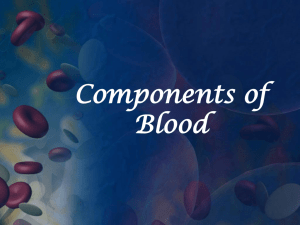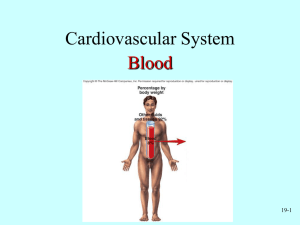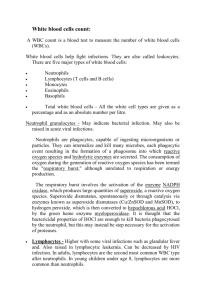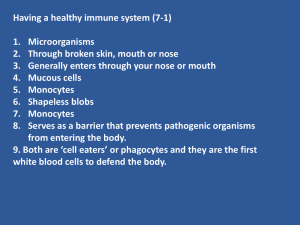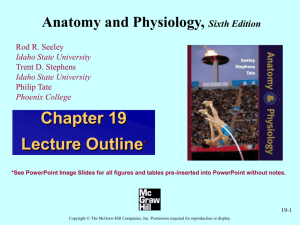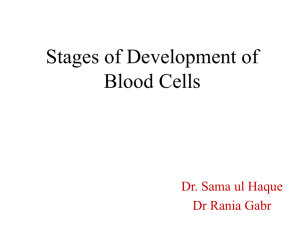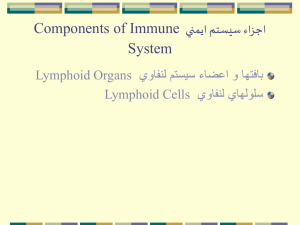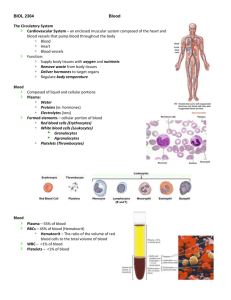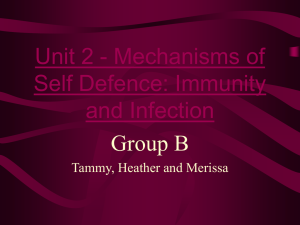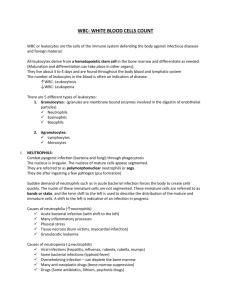Blood - Wofford
advertisement
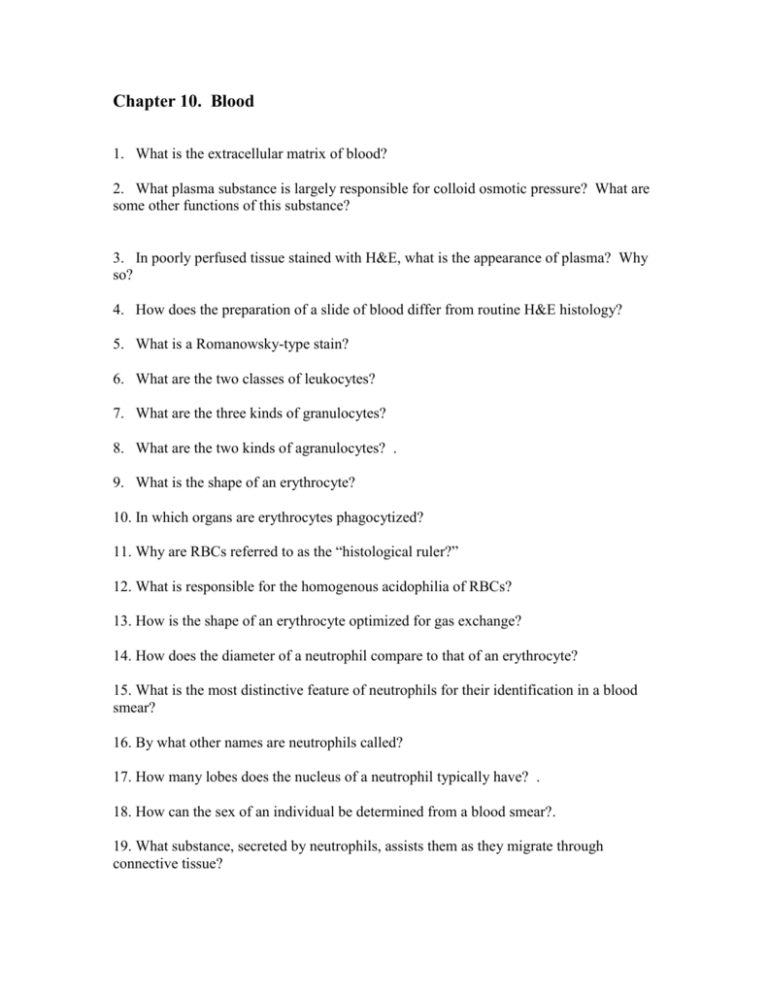
Chapter 10. Blood 1. What is the extracellular matrix of blood? 2. What plasma substance is largely responsible for colloid osmotic pressure? What are some other functions of this substance? 3. In poorly perfused tissue stained with H&E, what is the appearance of plasma? Why so? 4. How does the preparation of a slide of blood differ from routine H&E histology? 5. What is a Romanowsky-type stain? 6. What are the two classes of leukocytes? 7. What are the three kinds of granulocytes? 8. What are the two kinds of agranulocytes? . 9. What is the shape of an erythrocyte? 10. In which organs are erythrocytes phagocytized? 11. Why are RBCs referred to as the “histological ruler?” 12. What is responsible for the homogenous acidophilia of RBCs? 13. How is the shape of an erythrocyte optimized for gas exchange? 14. How does the diameter of a neutrophil compare to that of an erythrocyte? 15. What is the most distinctive feature of neutrophils for their identification in a blood smear? 16. By what other names are neutrophils called? 17. How many lobes does the nucleus of a neutrophil typically have? . 18. How can the sex of an individual be determined from a blood smear?. 19. What substance, secreted by neutrophils, assists them as they migrate through connective tissue? 20. In which type of blood vessel are neutrophils most likely to leave the bloodstream and enter tissues? 21. What is chemotaxis?. 22. How do neutrophils interact with foreign substances at the site of inflammation? 23. How are neutrophils involved in inducing a fever? 24. What is pus? 25. What do monocytes become when they enter connective tissue at a site of tissue injury? 26. How do monocytes interact with “spent” neutrophils? 27. What types of leukocytes are indicative of chronic inflammation? 28. What are the distinctive histological features of eosinophils (cell size, attributes of the nucleus, cytoplasmic granules)? 29. What substances produced by eosinophils counteract certain substances released by mast cells and basophils?. 30. Which type of leukocytes is present in large numbers at the site of a parasitic infection? 31. What is distinctive about the cytoplasmic staining of basophils? 32. How does the size of basophils compare with those of other leukocytes? 33. In what ways are basophils and mast cells similar? 34. The insets of Figures 10.9 and 10.10 show an eosinophil and a basophil. In which of these cell types is it difficult to see the nucleus? Why? 35. What term is given to those lymphocytes in the blood that have developed the capacity to recognize and respond to antigens and are in transit from one lymphatic tissue to another? 36. What is the range of dimensions for lymphocytes and what are the dimensions of the vast majority? 37. In blood smears, how does the size of lymphocytes compare to RBCs? 38. What are the distinctive histological features of small lymphocytes in a blood smear? 39. What are the 3 functionally distinct types of lymphocytes? P. 284 T, B, and NK. 40. How can T and B lymphocytes be distinguished from each other in blood smears and tissue sections? 41. What are the percentages of the three types of lymphocytes in adult blood? 42. What are the four sub types of T lymphocytes? 43. Which of the above secrete perforins that lyse infected or neoplastic cells? 44. Which of the above interact with antigen-presenting cells and orchestrate an immune response involving multiple cell types? 45. What are the distinctive histological features (size and nuclear morphology) of monocytes in a blood smear? 46. Upon leaving the bloodstream, what are the possible fates of a monocyte? 47. Monocytes are “antigen presenting cells.” What does this mean? 48. What is the function of megakaryocytes in bone marrow? 49. Do platelets have a nucleus? 50. What is the approximate size of a platelet? 51. In very general terms, what is the role of platelets based on the contents of the granules that are released? 52. What are the actions of serotonin and histamine released form platelets? 53. What is meant by hemopoiesis? 54. What is an HSC? 55. What are the sites of hematopoiesis from the earliest stages of human development to adulthood? 56. What types of cells are derived from lymphoid stem cells, also called common lypmphoid progenitor cells? 57. What types of cells are derived from myeloid stem cells? We will not be concerned with the developmental steps that lead to the mature cell types shown on Figure10.16 and as covered on p. 292-298. 58. What name is given to the blood vessel that connects arteries and veins in red bone marrow? . 59. What is an aperture? 60. What changes occur in yellow bone marrow of adults in response to severe blood loss?
